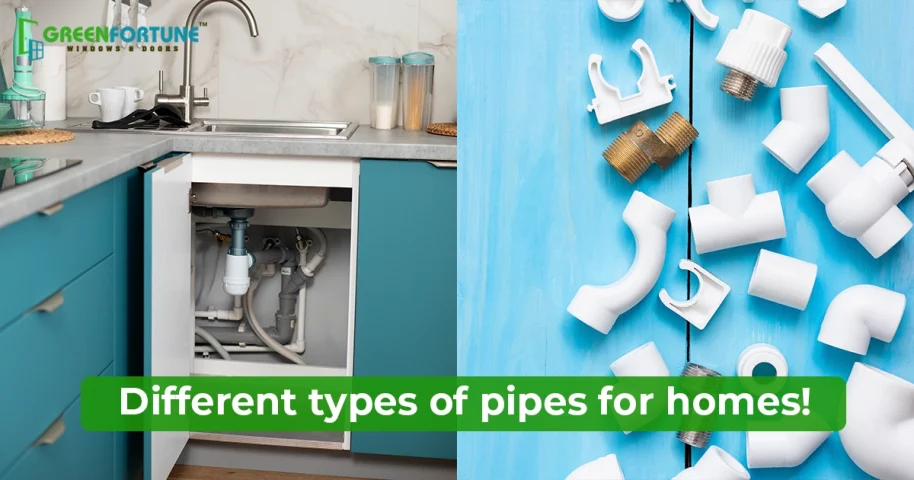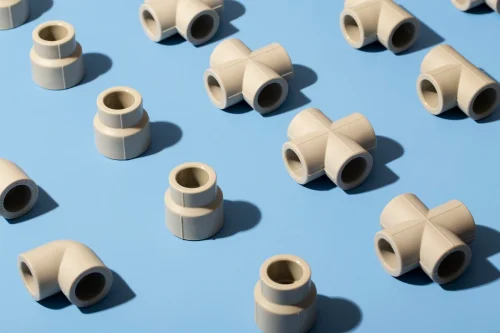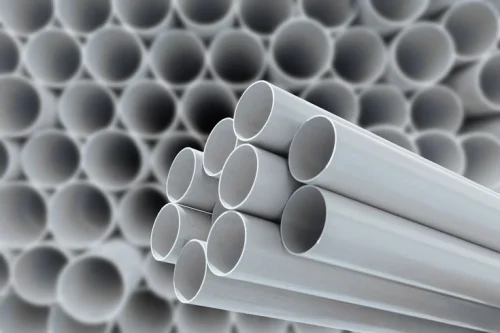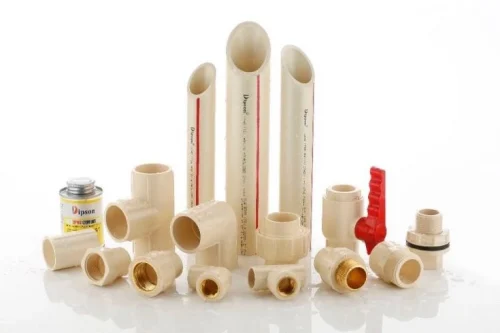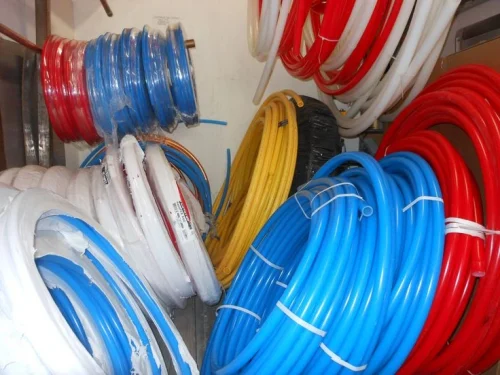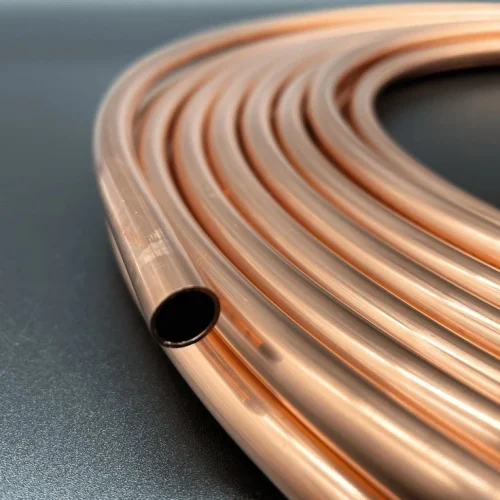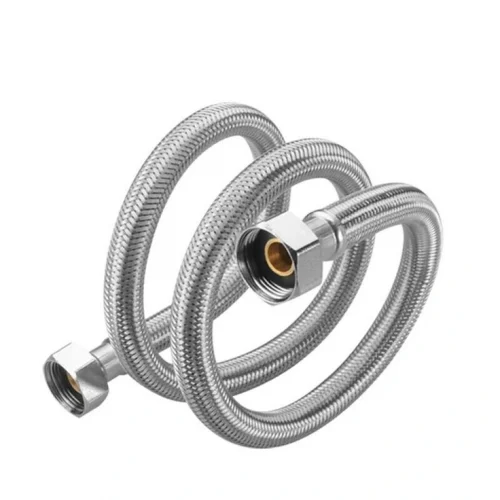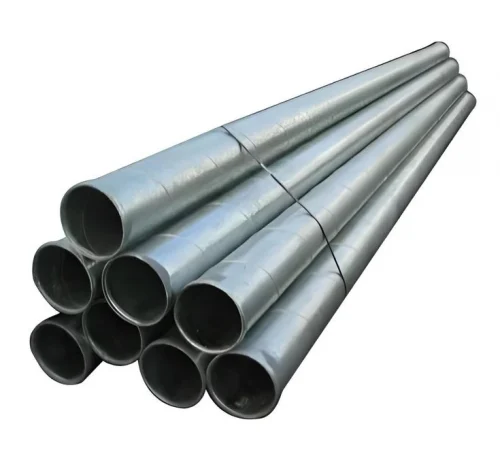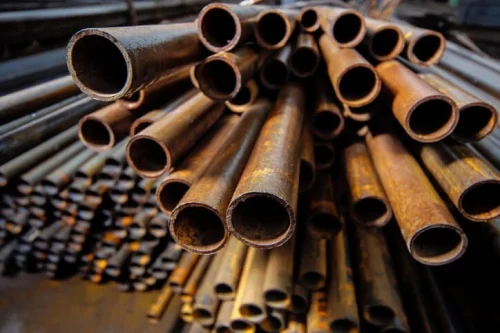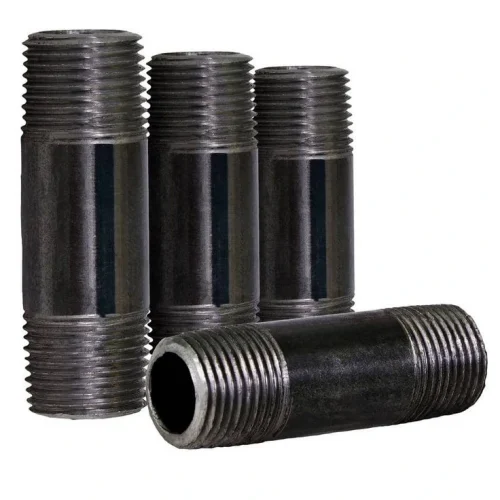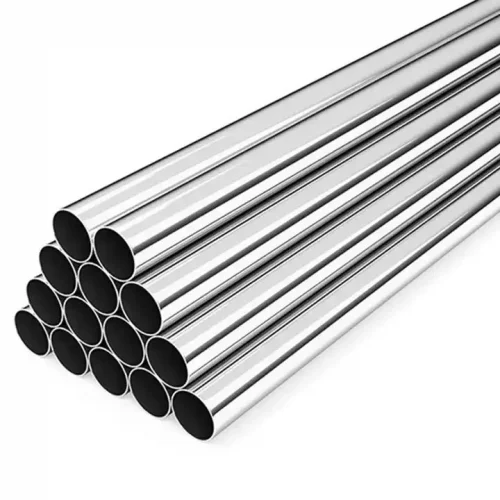
The Ultimate Guide to Boiling Water Proof Ply (BWP) Grade
April 17, 2025
Reshaping Your Space With Beautiful Wall Brick Patterns
April 17, 2025Let’s be honest- most of us do not think about what types of pipes run through our homes. It takes a leak, low water pressure or a clogged drain to make us realise how important they are. And by then? It’s already a headache.
So, choosing the right types of plumbing pipes consciously can save you from future disasters. In this blog, let’s explore different types pipes and where they are used in homes.
Also read: How to get rid of mould at home?
Table of contents
10 Types Of Plumbing Pipes Used In Homes
Here are some of the commonly used pipe types at home.
1). PVC Pipes (Polyvinyl Chloride)
PVC pipes are one of the most common types of plumbing pipes used in Indian homes. They are used especially for cold water supply and waste drainage. Have you seen those white plastic pipes on the exterior walls or drain outlets in your home? They are PVC pipes.
- Uses: These pipes are used for old water pipelines, drainpipes, rainwater collection and garden taps.
- Advantages: PVC pipes are rust-free, lightweight, affordable and very easy to install. They last for around 25 to 30 years without any maintenance.
- Tips: PVC pipes are not suitable for hot water. If exposed to heat, these pipes may soften or crack. Make sure to use it only for cold water or drainage.
2). CPVC Pipes (Chlorinated Polyvinyl Chloride)
CPVC pipes are similar to PVC pipes but with a twist. They can handle both cold and hot water. They are an upgraded version of PVC pipes and so, suitable for bathrooms, kitchens and overhead tanks. That’s the reason they are now commonly used in new home constructions.
- Uses: CPVC pipes are used for hot and cold water pipelines.
- Advantages: CPVC pipes can handle high temperatures, up to 93°C. They do not corrode and are safe for drinking water. They also last long, for over 30 to 40 years with no problems.
- Tips: In case you are replacing old metal pipes, CPVC is a solid, low-cost option since it is an all-rounder for home water supply.
3). PEX Pipes (Cross-linked Polyethylene)
PEX pipes are perfect for modern homes because they are super flexible and can loop easily around corners without needing many joints. The chances of water leakage are also less when these pipes are used.
- Uses: PEX pipes are used in bathrooms, kitchens and wash basins.
- Advantages: These pipes are bendy, easy to install and can handle both hot and cold water. They do not rust at all. They are perfect for homes with high water pressure.
- Tips: PEX pipes can be concealed inside walls or floors. Plumbers usually prefer this because it is lightweight, flexible and can be quickly installed.
4). Copper Pipes
Copper pipes are highly durable and known for their premium quality. And that’s the same reason, you may find the pricing to be on the higher-end. They last for decades without corroding or leaking. So, if you are looking for a one-time investment, copper pipes are perfect.
- Uses: Copper pipes are used for hot and cold water pipelines.
- Advantages: Copper pipes are strong, corrosion-resistant, safe for drinking water and can handle high pressure and temperature without cracking.
- Tips: Make sure the water is not too salty, as it can damage copper over time.
5). Flexi Pipes
Flex pipes are short, braided pipes you find below sinks or behind toilets. They are like a handy connector between your main pipes and the appliance and are not suitable for the entire plumbing system. It is also one of the most common types of plumbing pipes used in homes.
- Uses: Flexi pipes are used for connecting taps, toilets, geysers, washing machines, and water purifies.
- Advantages: These pipes are easy to fix, don’t require welding or threading and save space. They are super useful in narrow areas or for quick repairs.
- Tips: Make sure to use good-quality flexi pipes with steel braiding for long life, as the cheap ones usually burst under pressure.
Also read: How to choose the right water pipe for your home.
6). Galvanized steel Pipes
Before plastic pipes became popular, galvanized steel pipes were used. They have a zinc coating to prevent rust. But over time, the coating wears off, and the inside starts corroding. These pipes are outdated now.
- Uses: Galvanized pipes were used for water supply lines in old buildings.
- Advantages: These pipes are strong and tough and usually last easily for 40 to 50 years.
- Tips: Galvanized pipes are not suitable for new, modern homes. If you are renovating your home and by any chance find galvanized pipelines, replace them with CPVC or PEX pipes.
7). Cast Iron Pipes
You can find cast iron pipes in large buildings or older apartments. These pipes are thick and black in colour and are used for carrying wastewater or stormwater.
- Uses: Cast iron pipes are used in drainage pipes, underground sewage lines and rainwater pipes.
- Advantages: These pipes are very strong, and when water flows through them, there will be less noise.
- Tips: Cast iron pipes are very heavy and need skilled labour for installation. They are outdated and not used in new homes any more. So, if you find them, it’s better to replace them with some other pipes.
8). Black Iron Pipes
Black iron pipes are strong metal pipes used to carry gas inside homes. These pipes are not used for water but play a crucial part in household plumbing when it comes to cooking and heating systems.
- Uses: Black iron pipes are used for cooking gas pipelines, LPG/PNG lines in homes.
- Advantages: These pipes are fire-resistant, can handle high pressure and are very sturdy.
- Tips: These are types of plumbing pipes that must be installed only by certified technicians, and regular maintenance is recommended to prevent rust.
9). Stainless Steel Pipes
Stainless steel pipes are strong, shiny and rust-proof. You can find them in luxury buildings or homes near coastal areas, where it is normal for metal pipes to rust fast.
- Uses: Stainless steel pipes are used in drinking water lines, premium plumbing and coastal homes.
- Advantages: They are rust-proof, hygienic, strong and have a long life span.
- Tips: Opt for these pipes only if your home is in an area with hard or salty water. Otherwise, this option may be a bit expensive.
10). uPVC Pipes Home
uPVC pipes are stronger and a more durable version of PVC pipes. Unlike PVC, they do not have plasticizers, making them rigid. These are gaining popularity as the best types of plumbing pipes.
- Uses: uPVC pipes are used for drinking water supply, borewell pipelines, drainage, sewage and outdoor plumbing.
- Advantages: uPVC pipes are rust-proof, coercion-resistant, durable, long-lasting, lightweight, easy to install and easy to maintain.
- Tips: These pipes are not suitable for hot water supply. Instead, you can opt for CPVC pipes.
Also read: How to stop water leakage from walls
Final Thoughts
If you are building a new home or renovating a building, having sheer knowledge on the types of plumbing pipes can save you a lot of problems in future. Based on the water temperature in your area, the quality of water, budget concerns, lifespan, and ease of installation and maintenance, choose the one that’s best for your home.
Just like how bad plumbing can cause leaks and trouble, poor-quality windows and doors can bring noise, dust, and heat inside your home. That’s why you must trust GreenFortune. Our uPVC doors and windows block outside noise, resist harsh weather, and last for years.
FAQs
1). What are the three types of plumbing systems?
The three types of plumbing systems are potable water, sanitary drainage, and stormwater drainage. Potable water system provides clean water for usage. The sanitary drainage system helps get rid of the wastewater. The stormwater drainage system removes excess water from your house when it rains.
2). Which pipe is commonly used in India?
PVC (polyvinyl chloride), CPVC (chlorinated polyvinyl chloride), copper, and PEX pipes are the commonly used plumbing pipes in India. These pipes are lightweight, durable and used for water supply and drainage.
3). Which plumbing pipes are safe for drinking water?
Copper pipes, PEX (cross-linked polyethylene), and CPVC (chlorinated polyvinyl chloride) are considered generally safe for drinking water. It is because they are non-toxic and do not contaminate the water.







